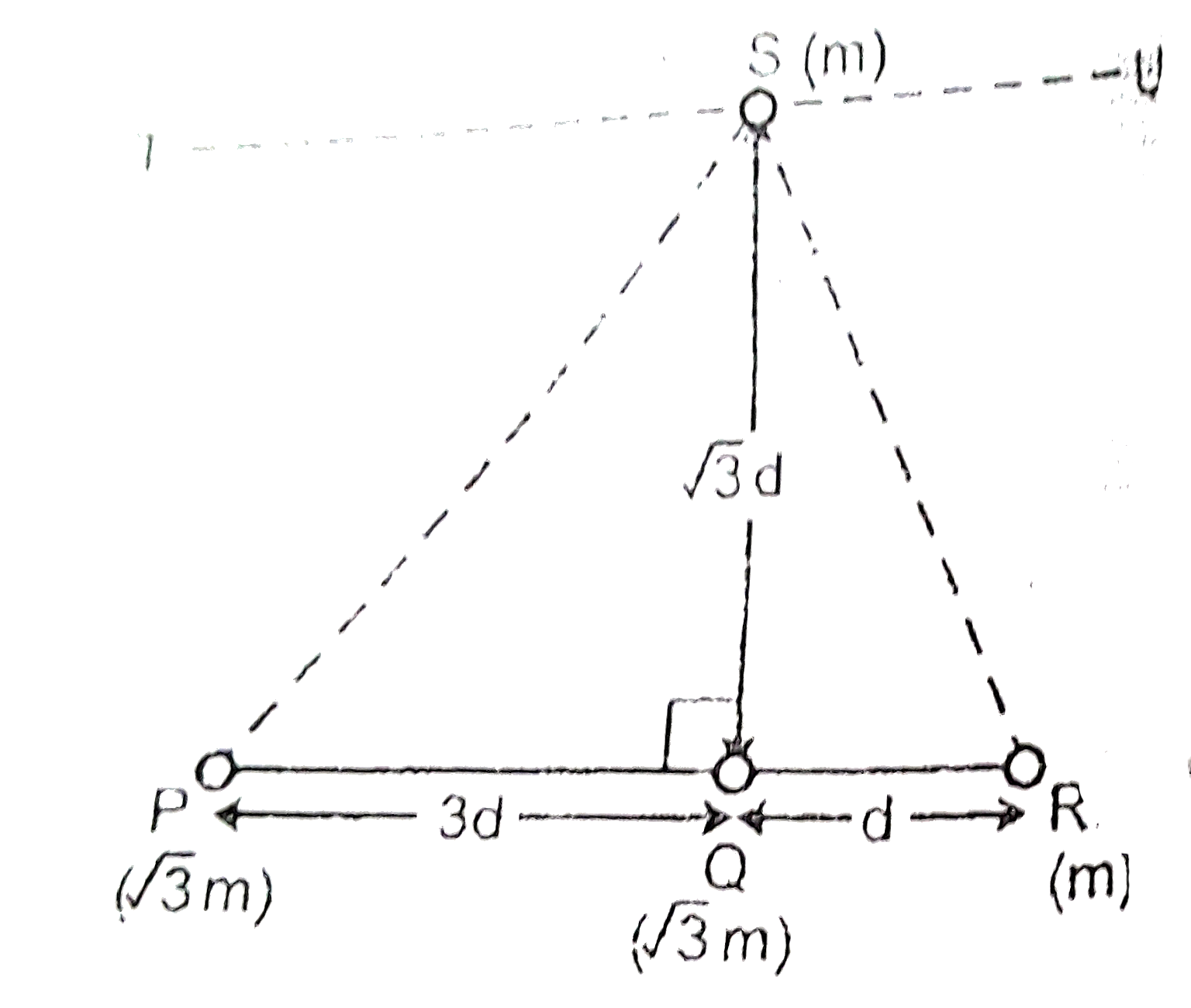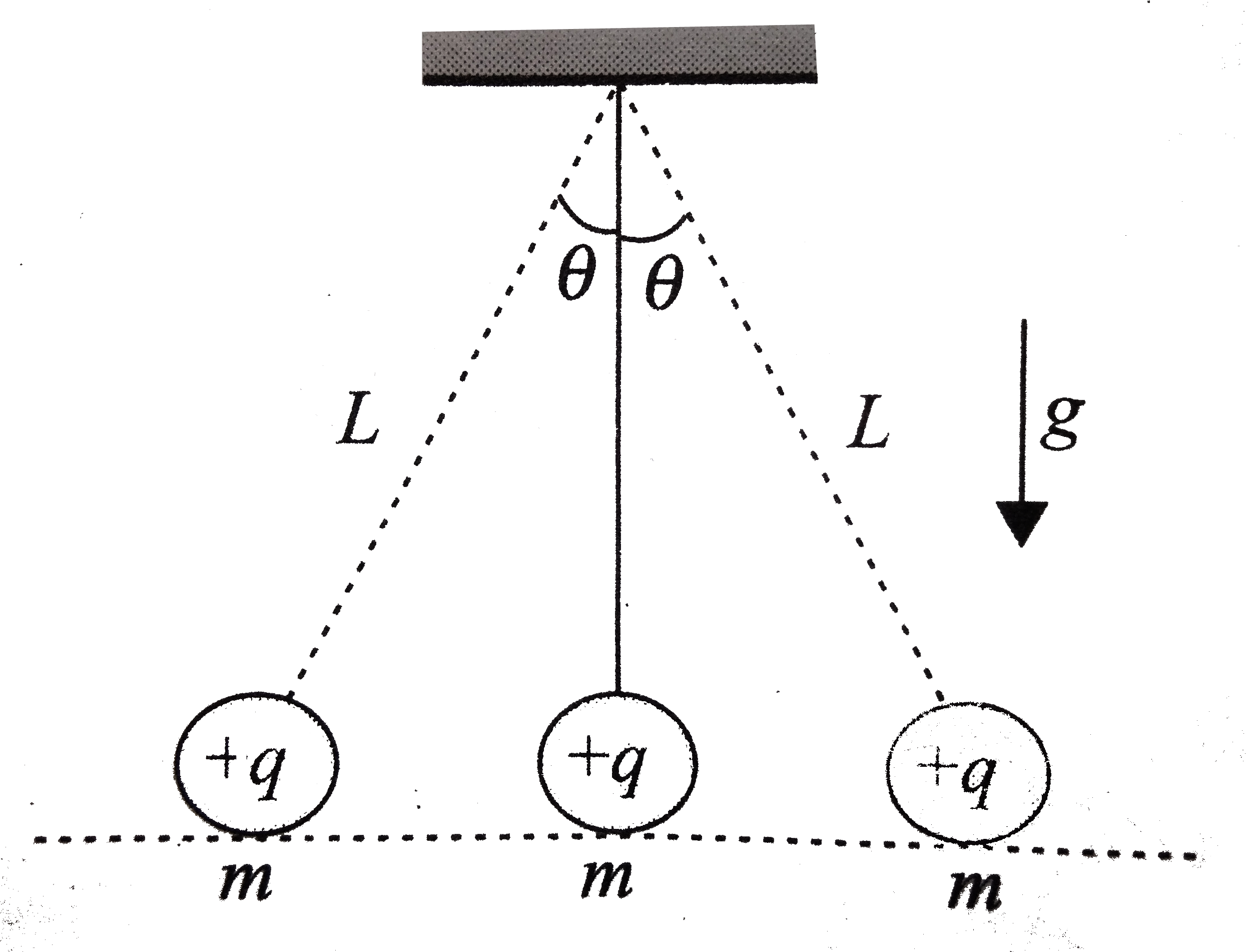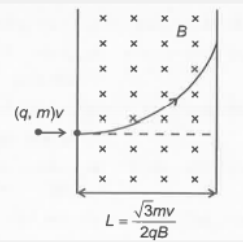
Three particles having charges q,q and 2q have masses m, 2m and 5 m respectively as shown, the three collinear charges are initially released from rest from the positions as shown. (Take K=14π∈0
Q. The ratio of magnitude of acceleration of charge of mass m: charge of mass 2m: charges of mass 5m will be:
1:2:10
10:2:1
3:1:1
1:3:1
The correct Answer is:A
The ratio of velocities of acceleration of mass m, 2m and 5m are −3:−1:1 considering left direction to be negative and right direction to be positive. Hence the distance between m and 2 m at any instant is sae as distance between 2m and 5 m.
As thhe separation between charges becomes very large the loss in potential energy is equal to kq2r+k2q2r+k2q22r=4kq2r and this equals to gain in kinetic for all the three charged particles.
that is 12m×(3x)2+122m×v2+125m×v2=1216m×
v2=4kq2r
∵125mv2=5Kq24r
Similar Questions

Three particles having charges q,q and 2q have masses m, 2m and 5 m respectively as shown, the three collinear charges are initially released from rest from the positions as shown. (Take K=14π∈0
Q. The maximum kinetic energy of charge of mass 5m is:View SolutionThe ratio of magnetic dipole moment and angular momentum of charged body of charge q and mass m is
View SolutionThree charged particles having charges q, -2q & q are placed in a line at points (-a, 0), (0,0) & (a , 0) respectively. The expression for electric potential at P(r, 0 ) for r >> a is
View SolutionA charged particle of mass m and charge q is released from rest the position (x0,0) in a uniform electric field E0ˆj. The angular momentum of the particle about origin.
View SolutionMention the charge, mass and e/m ratio for an electron.
View SolutionThree particales P,Q and R are placedd as per given Masses of P,Q and R are √3m√3m and m respectively The gravitational force on a fourth particle 'S' of mass m is equal to
 .View Solution
.View SolutionThree identical point charges, each of mass m and charge q, hang from three strings as shown in fig. The value of q in term of m, L, and q is
 View Solution
View SolutionA charged particle of mass m and charge q is released from rest in an electric field of constant magnitude E. The kinetic energy of the particle after time t is
View SolutionA charge particle of mass m and charge q enters in a region of uniform magnetic field as shown in figure.The magnitude of change in linear momentum due to magnetic field will be
 View Solution
View SolutionA particle of charges Q and mass m travels through a potential difference V from rest. The final momentum of the particle is
View Solution

